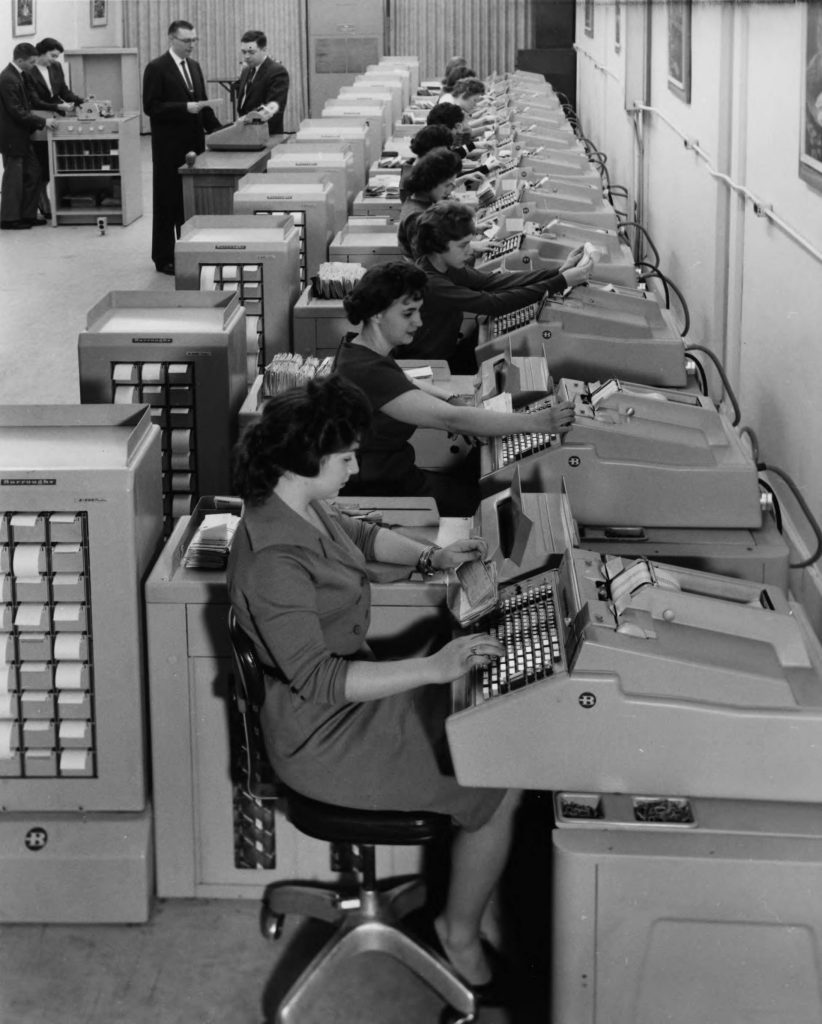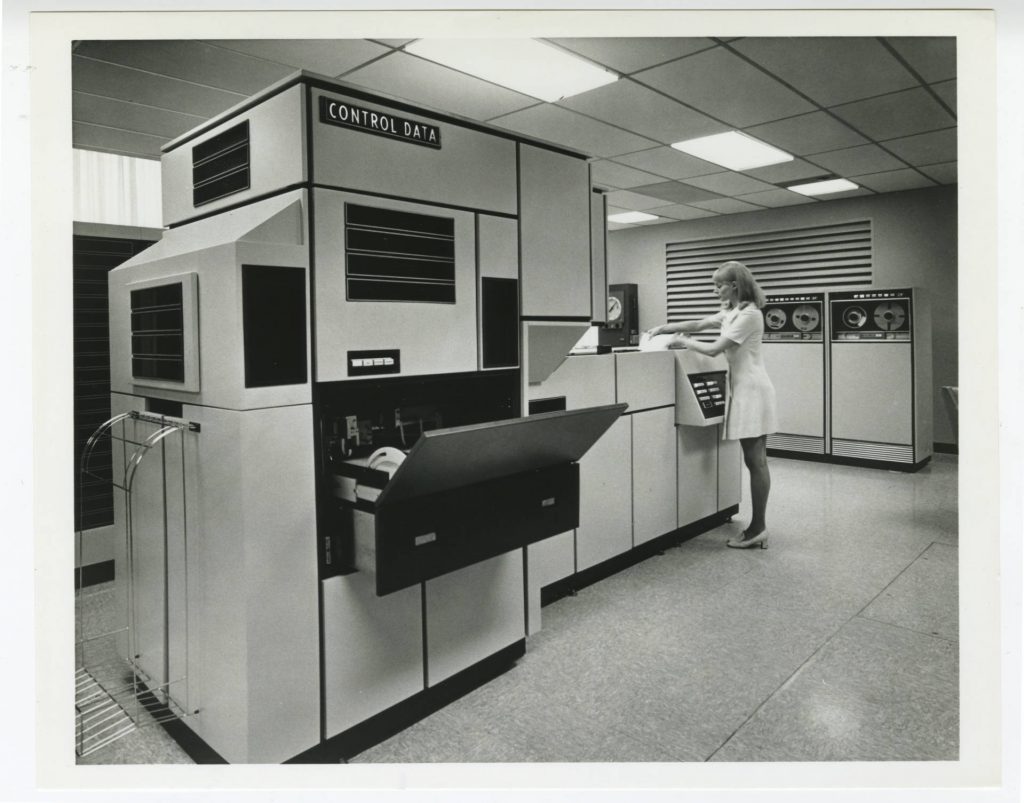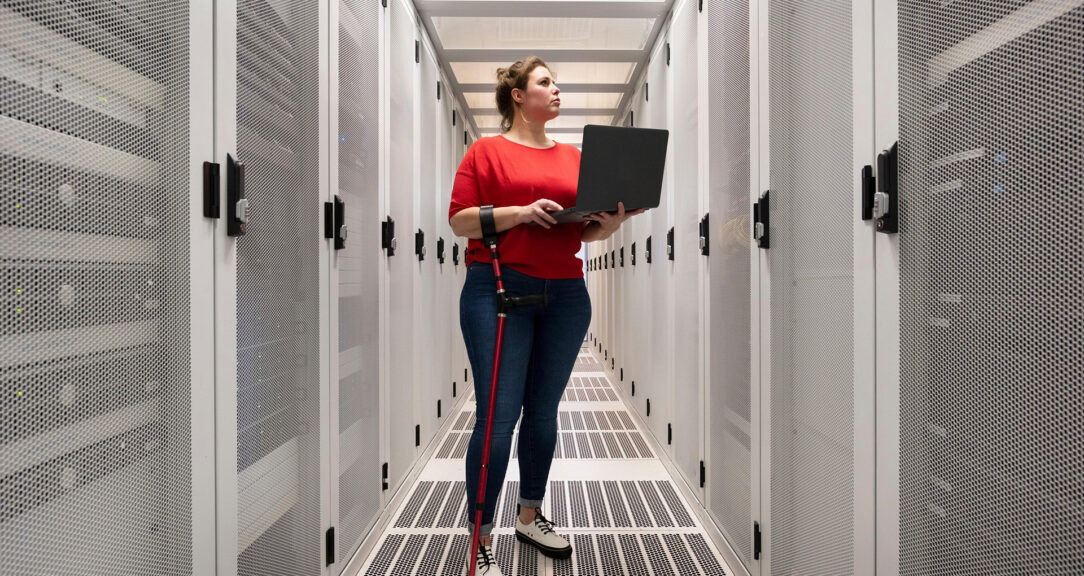Let’s go back to the early 20th century, a time where cash was king and most people worked in agriculture or manufacturing. Only a handful of individuals had access to a current bank account and personal checks. Most of the labor force was paid in weekly installments, most often according to the number of hours of manual labor they had put in.
But after World War I, we began to see early commercial use of computers. These devices encompassed punch-card electromechanical tabulators in the 1920s and 1930s, analog devices that emerged in the 1950s, and the widely adopted IBM 360 of the late 1960s. ADP began automating payroll processing using mainframes in 1957, and in 1962 leased its first computer, an IBM 1401, to handle payroll operations.
Today, making and receiving digital payments is as natural to us as breathing, and robotic process automation (RPA) is transforming payroll even further. But, as I documented with my colleagues, the idea of a cashless society first emerged in the U.S. during the mid-1950s with the adoption of computer technology in banking, and the concept was popularized in the press on both sides of the Atlantic in the late 1960s and early 1970s. The digitization of payroll was at the center of this evolution.
In the dawn of the automation age, accounting functions and payroll were usually among the first activities to be mechanized. Management perceived these tasks to be repetitive and the information collected crucial for decision-making. Regulatory changes for financial institutions in the mid-century also played a part. Savings banks, previously excluded from check clearing, were allowed to start offering current accounts. This opened up checking account capabilities to their many existing working- and middle-class customers. Not wanting to be left behind, commercial banks expanded services for companies and their employees.
For example, in 1929, Westminster Bank in England, today part of the NatWest Group, replaced handwritten passbooks with machine-prepared statements. In 1948, the Trustee Savings Bank of Belfast in Northern Ireland deployed a new system of mechanized accounting, which included electromechanical ledger posting machines. Women were hired in ever-larger numbers to operate these devices and perform the repetitive tasks required of payroll. (The word “computer” initially referred to a person who crunched numbers.)

It wasn’t until the 1950s that large and medium-sized Spanish banks began to introduce mechanical accounting machines. And in France, Crédit Industriel d’Alsace-Lorraine imported the first three IBM Proof 803 machines to Europe. These supplemented the mechanical devices already in place to keep track of cash-in-hand client accounts, and the interest to be paid for savings accounts. It expanded again in 1955 to the payroll and equity departments. In 1962, the Texas National Bank of Houston chose the NCR 315 computer system to expand their offer, which included a bureau service where companies could process payroll on the bank’s computer. That same year, the First Bank of Cincinnati chose a similar system to expedite its own payroll processing.
In Mexico, the federal government installed large computers in the mid-1960s, including an IBM 704 at the Mexican Social Security Institution and two CDC 604s at the finance ministry, to centralize the federal employee payroll. In 1965, the largest and oldest university, UNAM, began using an IBM 1400, and it soon shifted its use from technical and scientific computing to administrative tasks such as payroll and accounting. Anything resembling RPA was still decades away.
In a similar vein, the successful civil engineering firm Ingenieros Civiles Asociados installed an IBM 1130 in 1966, and shifted its use from engineering to administration, particularly cost accounting and payroll. However, programming the payroll application from scratch proved to be a challenge. The 1130 wasn’t able to process COBOL, a clunky programming language used for business applications, so the system had to be designed in FORTRAN, an older programming language primarily used for scientific applications. But FORTRAN used a floating-point arithmetic that wasn’t suited to accounting purposes. The programmers had to use adding and multiplying subroutines to ensure an accurate accounting record of pesos and cents.
After winning a major external engineering contract in 1968 to build the Mexico City subway, the firm ordered a larger CDC 3300 unit for an ambitious computer services business. Its first task was to handle the payroll of the 10,000 laborers and engineers involved in the construction of the first two lines of the Metro system.
Also during the 1960s, administrative automation started making it possible for employers to pay wages by bank transfer instead of in cash, and here, Sweden led the way. The decades following World War II were marked by economic growth, increased affluence and expansion of the welfare state in Sweden. Around 1959, Skandinaviska Banken invested in its first mainframe computer, and Svenska Handelsbanken and Sparbankernas Bank followed suit two years later. These computers were initially used to handle the time-consuming task of calculating interest on savings accounts.
This problem grew as more people got direct payroll payments and opened current accounts alongside savings accounts, increasing the number of transactions the banks had to handle. Handelsbanken and other commercial banks convinced their contacts at manufacturers to sign up their companies for direct payroll deposit services. Initially hesitant, the Swedish saving banks followed suit, using their contacts with labor unions to help convince individuals to opt for direct-to-account payment at their savings bank.

For these direct-to-account payments, banks required employers to provide the relevant information via punched cards, paper tape and eventually magnetic tapes. These were prepared on-site and then taken physically and securely to the bank’s computer centre. It also created a larger banking ecosystem, as we saw happen in the Netherlands. Large companies and the Dutch government identified an opportunity to save money on the labor-intensive and expensive weekly or monthly payroll exercise. Banks were interested because the Nordic countries had found that direct-deposit salary payments had a positive effect on account holders’ average bank balances. In 1966, the banking sector introduced current accounts for private households after the Dutch government developed a system for standing orders and direct debits.
Digitizing payroll took more than just installing a new computer, though; it required a reshaped regulatory landscape. In the U.K., legislation from the end of the 19th and start of the 20th centuries required payroll to be paid out in cash — this was intended to stop abusive practices by employers such as only offering coupons good at the company store. After a decade of lobbying in Parliament, direct payroll services in the U.K. were born in 1958 after regulatory changes allowed clearing banks to offer payment by checks or bank credit to any worker who wanted it.
The number of accounts in the Netherlands receiving direct payroll payments grew from 165,000 in 1968 to 1.3 million in 1973.
The rapidly rising number of direct payroll accounts created its own issues. For instance, the number of accounts in the Netherlands receiving direct payroll payments grew from 165,000 in 1968 to 1.3 million in 1973. And digitizing payroll had only solved one part of the journey: People still had to pay for everyday purchases in cash. Customer congestion at branches became a problem, particularly on payday. To address these issues, a number of banking innovations happened in the 1970s and 1980s to move money out of accounts electronically, like the debit card and the cash machine: But I’ll cover this story in the next edition of the ADP ReThink Quarterly.
Read more
Sign up to keep up to date with ReThink Q.







